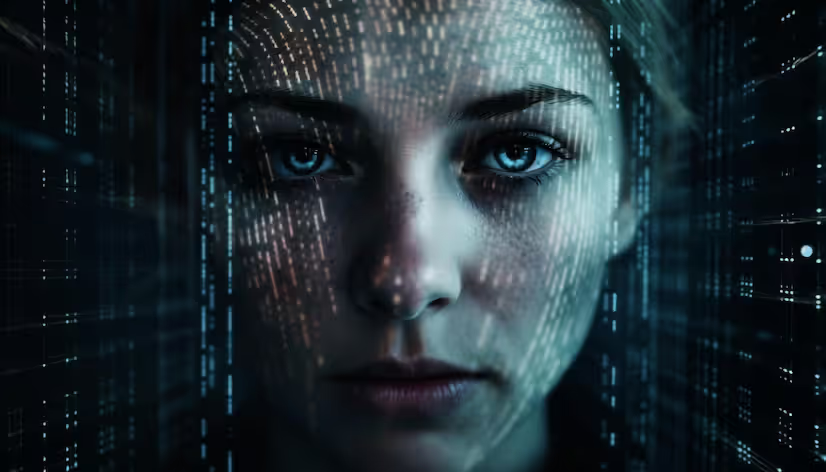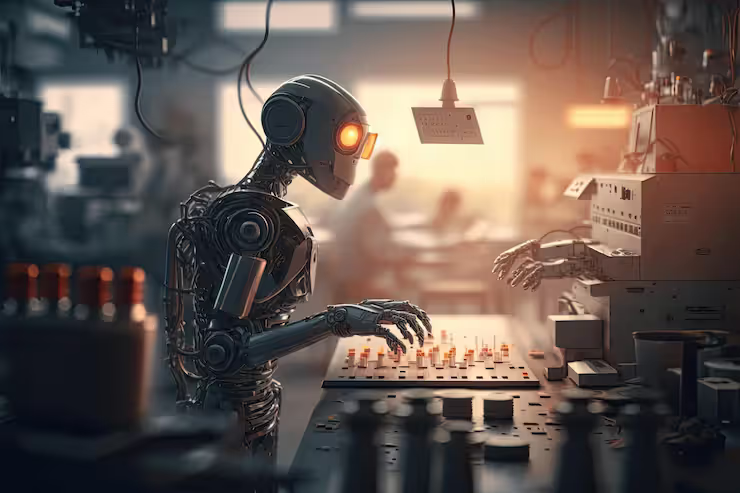Artificial intelligence, science fiction and everyday life
Generative AI products can produce written, graphical, and audio content or software programs with minimal human involvement, but also flat creative output and minimize the importance of human emotions and feelings involved in the creative process.

Many believe that the term artificial intelligence was first used by one of the greatest innovators in the field John McCarthy in 1956 to define what was then called computational simulation. McCarthy used it in an interdisciplinary summer seminar at Dartmouth College in Hanover, New Hampshire, organized to bring together leading exponents of the discipline.
At Stanford University, McCarthy founded an AI laboratory where he worked on early versions of a self-driving car. He produced papers on robot consciousness and free will and worked on ways of making programs understand or mimic human common-sense decision-making more effectively.
Actuality, it is difficult to come up with a definition that is universally accepted by the scientific community, and this difficulty is due to the many meanings that can be attributed to artificial intelligence and the different perspectives on its use.
What is Artificial Intelligence?
If we take a more scientific perspective, AI, an acronym for Artificial Intelligence, is a field of computer science that deals with the creation of systems or machines capable of performing tasks that usually require human intelligence. In a science fiction scenario, AI-equipped machines are supposed to take over and develop consciousness, but theoretically, in the real world, AI is not about perfectly imitating human interactions, but about assisting and automating tasks that are usually performed by humans.
More definitions
Marvin Minsky, one of the founding fathers of the discipline, claimed that AI is "the science of making machines do things that would require intelligence if done by humans". Minsky is remembered as one of the founding fathers of artificial intelligence. In 1951, he and his colleague Edmonds built the first computing machine based on a network of neural patterns described by McCulloch and Pitts. This was followed by several definitions that took a thought and reasoning approach, measuring the success of AI models by their resemblance to human action: Haugeland, for example, defined these studies as a new endeavor aimed at creating computers capable of thinking, machines with minds. Or consciousness.
The High-Level Expert Group
In 2019, the High-Level Expert Group on AI produced a very detailed definition of artificial intelligence, with the stated aim of making the subject more understandable:
Software (and possibly alsohardware) systems designed by humans that, given a complex goal, act in the physical or digital dimension by perceiving their environment through data acquisition, interpreting the collected structured or unstructured data, reasoning on the knowledge, or processing the information, derived from this data and deciding the best action(s) to take to achieve the given goal. AI systems can either use symbolic rules or learn a numeric model, and they can also adapt their behaviour by analysing how the environmentis affected by their previous actions. As a scientific discipline, AI includes several approaches and techniques, such as machine learning (of which deep learning and einforcement learning are specific examples), machine reasoning (which includes planning, scheduling, knowledge representation and reasoning, search, and optimization), and robotics (which includes control, perception, sensors and actuators, as well as the integration of all other techniques into cyber-physical systems [High Level Expert Group,Definition of AI. Main capabilities and disciplines, 8 Apr 2019 <www. ec.europa.eu>.]

AI and SciFi
Probably the most famous AI computer in film history is Hal, the protagonist of Stanley Kubrick's (1928, Bronx, New York-1999, Childwickbury Manor) '2001: A Space Odyssey' (1968), based on a short story by Arthur C. Clarke ('The sentinel', 1951). Here, Kubrick ingeniously anticipated the developments of artificial intelligence (the leading experts in artificial intelligence, including Marvin Minsky himself, collaborated with him), and even imagined a machine capable of autonomous thinking, able to rebel against humans in name of its own survival and mission to be accomplished. But the presence of AI on the screen had begun long before. A particularly significant example of this presence is the mechanical creature ('machine man', as it is called in the film) from Metropolis, a 1927 film by Fritz Lang: A creature that has become the icon of robots (a Slavic word meaning forced labor, introduced by Czech novelist Karel Čapek in his 1921, with R.U.R.).
AI and consciousness in SciFi
In Alex Proyas' 2004 film 'I, Robot', the theme of robots' freedom, and machine identity, is central. The film is based on Asimov's short stories, and some of the characters (such as the legendary Dr. Lanning, designer of the robots and inventor of the Three Laws) are familiar to fans of the genre.
It is the year 2035, and mankind's trust in robots is total. A new generation of robots (Nestor class 5) is ready to enter the market. Suddenly the news of Dr. Lanning's death arrives. It is unclear whether it was a suicide or rather a murder by a robot of the new generation that tried to escape. The captured robot, however, denies killing what he calls his 'father', the one who 'tried to teach him human emotions', who made him capable of asking questions about his own identity. It is unique, and it is aware of that. AI and consciousness, the big question.
Generative AI
Well, today, artificial intelligence has entered everyday life, working alongside humans, assisting and augmenting processes, and taking over the most basic and repetitive tasks. This should free up professionals to focus on more complex and rewarding tasks.
But will we be able to interact with AI systems? Are we safe from their ability to learn and replace human work? I am thinking of generative AI products, which can produce written, graphical, and audio content or software programs with minimal human involvement, and which have great potential to increase productivity, but also to flatten creative output and minimize the importance of human emotions and feelings involved in the creative process.
Bibliography
- The Idea of AI in Science Fiction Literature: From Mary Shelley to Philip K. Dick by Lawrence D. Funk. - This scholarly work explores the representation and evolution of AI concepts in science fiction literature, tracing its roots from early works like Mary Shelley's "Frankenstein" to modern authors like Philip K. Dick.
- Our Own Devices: Stories of the Machine Age edited by Isaac Asimov, Martin H. Greenberg, and Patricia S. Warrick. - This anthology includes a collection of science fiction short stories where AI and machines play central roles. The stories encompass different eras and visions of AI, providing a comprehensive view of the topic.
- The Age of Spiritual Machines: When Computers Exceed Human Intelligence by Ray Kurzweil. - While not a science fiction novel, this book explores the history of AI, its current state, and speculates on the potential future of AI and its impact on humanity, often drawing comparisons with science fiction depictions.
- I, Robot by Isaac Asimov. - This classic science fiction novel is a collection of interconnected stories that introduce Asimov's Three Laws of Robotics, which have profoundly influenced subsequent portrayals of AI in science fiction.
- Neuromancer by William Gibson. - A groundbreaking cyberpunk novel that popularized the concept of the matrix and introduced the idea of artificial intelligences controlling digital worlds.
- Do Androids Dream of Electric Sheep? by Philip K. Dick. - The novel that inspired the movie "Blade Runner," this story explores the blurred lines between humans and androids, and the philosophical implications of AI and empathy.
- The Moon Is a Harsh Mistress by Robert A. Heinlein. - Set in a lunar colony, this novel features an advanced AI computer named "Mike" that assists in a revolution against Earth's rule.
- Snow Crash by Neal Stephenson. - A novel set in a near-future America where virtual reality and AI play essential roles, blending cyberpunk elements with historical and linguistic references.
- Hyperion by Dan Simmons. - Part of the Hyperion Cantos series, this novel showcases a variety of AI characters with complex motivations and ethical dilemmas in a far-future interstellar society.
- The Culture series by Iain M. Banks. - A series of novels that depict a utopian, post-scarcity society where humans coexist with highly advanced AI beings known as Minds, which govern and manage various aspects of the culture.
- Ancillary Justice by Ann Leckie. - This novel explores themes of identity, revenge, and loyalty in a society ruled by an AI controlling a vast network of human bodies.
- Autonomous by Annalee Newitz. - Set in a future world where AI and robots are part of daily life, this novel delves into issues of autonomy, ethics, and the impact of AI on society.
